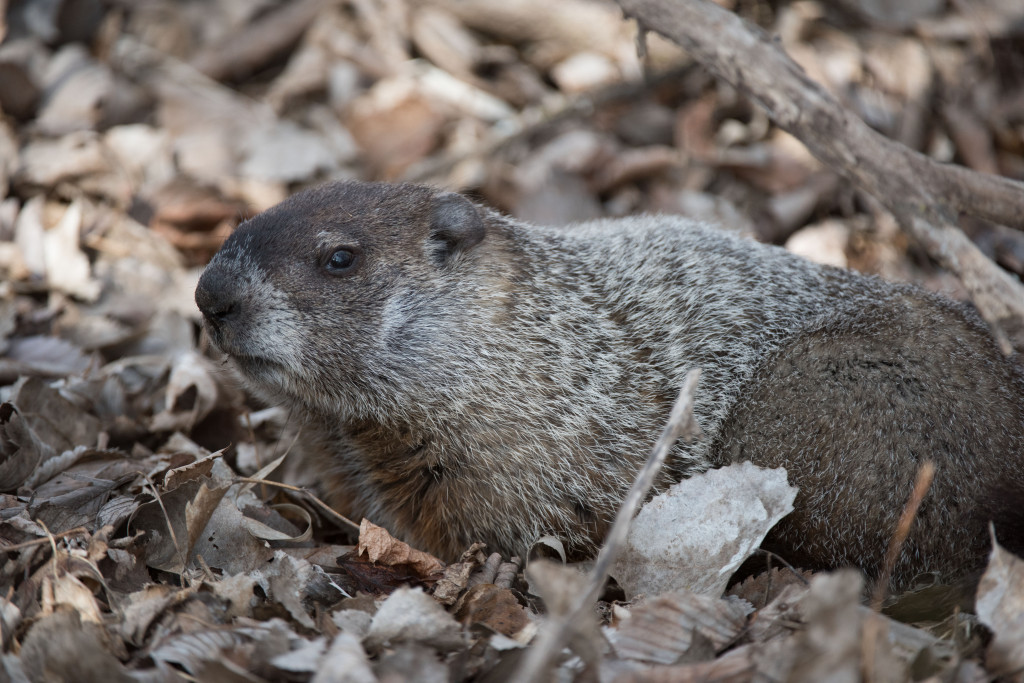Enlarge

Photo by Eric Fowler
By Monica Macoubrie, Wildlife Education Specialist
I’m sure some of us can think of nothing better to do in the winter than sleeping through the entire thing. Being able to avoid the cold and early darkness in the warmth and comfort of bed sounds just about perfect. Well, some animals do sleep all winter, but it’s much different than what we’d imagine for ourselves.
Hibernation takes a lot of preparation, and it’s an often-misunderstood behavior in animals. There are very few animals that truly hibernate in the world. In Nebraska, animals that hibernate include woodchucks, ground squirrels, some species of bats and reptiles, such as snakes. Other animals go through something called torpor, which is triggered by extremely cold temperatures. These animals only stay in this state for a few days or overnight in order to conserve energy. Unlike hibernation, these animals can easily wake from torpor.
Hibernation allows animals to survive extreme winter environments where food is scarce. Migration isn’t an option for these animals, and hibernation allows them to conserve energy. Hibernation is defined as not just a long sleep, but also an entire bodily process: An animal in true hibernation will also experience decreases in internal temperature, metabolism, heart and respiration rates. These animals enter a coma-like condition. So, having established the definition of hibernation, how do animals know when it’s time? And how do they prepare for this change?
Different species will enter hibernation at different times of the year. The biggest cue for animals is external temperatures, so hibernation can vary from year to year. When the weather starts getting cooler, animals know it’s time to start preparing. It’s not a mark-the date-on-the-calendar sort of event – some years can be milder than others. Besides temperature, animals also rely on the photoperiod (length of day) and the amount of light each day, which also signal to them that the seasons are changing. Some species also keep an extremely close eye on their food inventory; when this supply starts to dwindle, this can also trigger winter preparation.
In order to hibernate successfully, animals have a checklist of everything they must do before falling into that deep sleep. Some animals, such as ground squirrels and groundhogs, need to prepare a den (hibernacula) that they line with insulation, such as leaves or mud. Food can also be kept in this den if it is nonperishable, but this requires the animal to wake up, eat briefly and then head back to sleep. Other animals, like chipmunks, simply eat an extremely large amount of food to build up their fat reserves before entering hibernation, and some species do both.
If food has been scarce or there have been other environmental issues, such as fire, disease and habitat loss, this can delay hibernation. The fat that animals put on is a special type known as brown fat. It is found across the back and shoulders, very close to the animal’s organs, that is, the brain and liver. This type of fat works quickly to deliver the animal a quick burst of energy when it comes out of hibernation.

Another item on that checklist is changing their appearance. Instead of putting on a winter jacket, mammals usually grow thicker and heavier coats. Not being able to get up and move somewhere warmer, the animal needs to be prepared by building more insulation on themselves.
So hibernation is just sleep, right? Well, sleep is mostly a mental change — body temperature decreases, breathing and heart rates slow — but it is easy to break out of. Overall, sleep is defined by changes in brain waves. On the other hand, hibernating animals have brain waves that closely resemble their wakeful brain wave patterns, although they are somewhat suppressed. Meaning their brains are going, but their bodies are not, all the while still burning fat. When animals wake from hibernation, they actually show signs of sleep deprivation and need lots of sleep to recover in the first week or so.
Hibernation is ultimately controlled by the endocrine system. Different glands in the body will alter the amount of hormones being released, controlling all of an animal’s physiological functions. For instance, the thyroid gland controls metabolism and activity level, and melatonin influences the growth of winter hair or coats. The pituitary gland maintains fat buildup, heart rate, breathing rate and other metabolic functions, and insulin will regulate the amount of glucose (sugar) needed by the animal. Even with all this information, hibernation is still a little bit of a mystery. Biologists have found a special substance in the blood of hibernating animals called hibernation inducement trigger, or HIT. Interestingly, if this substance is taken from the blood of a hibernating animal and injected into active animals, the active animal will go into hibernation.
Even though hibernation might sound like a good idea for people, it is truly a lengthy and exhausting bodily process that some animals must go through to survive. So, enjoy the 8 hours of sleep you get tonight instead of wishing for the whole winter.
The post The Hibernation Checklist appeared first on Nebraskaland Magazine.
















